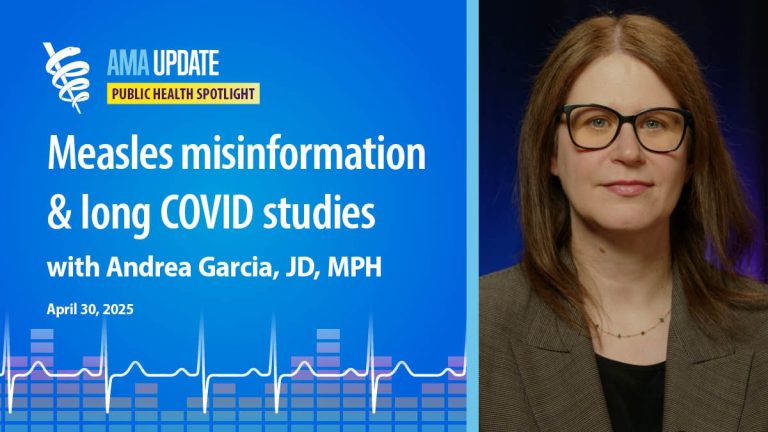Measles Outbreak Concerns and Misinformation Spread
A recent Kaiser Family Foundation poll reveals growing public awareness and concern regarding the measles outbreaks across the Southwest and the nation. While 56% of adults are aware of the increasing measles cases, a concerning 33% have encountered the false claim that the MMR vaccine is more dangerous than measles infection itself, marking a 15% rise since March 2024. This highlights the urgent need to combat misinformation and reinforce the safety and efficacy of vaccines. A separate study published in JAMA employed a simulation model to assess the potential spread of vaccine-preventable infections, including measles. The model indicated that even at current vaccination rates, measles resurgence to endemic levels is possible. A 10% decline in vaccination rates could lead to 11.1 million cases over 25 years, while a 50% drop could result in a staggering 51.2 million cases. These alarming projections underscore the critical importance of maintaining and improving vaccination coverage to prevent widespread measles outbreaks.
Unveiling the Prevalence and Complexity of Long COVID
Three recent studies shed light on the prevalence and complexities of long COVID, a condition characterized by persistent symptoms following a COVID-19 infection. A study in BMJ Global Health, encompassing participants from 13 countries, found that 25.1% reported long COVID symptoms, with sleep disorders, joint pain, fatigue, and headaches being the most common. Another study in BMJ Public Health, focused on patients in China, reported a 30.2% prevalence of long COVID, with fatigue, cough, and expectoration as the most frequent symptoms. A systematic review and meta-analysis also published in BMJ Public Health examined studies from December 2019 to February 2022 and found a 40% long COVID prevalence among healthcare workers. Fatigue, neurological symptoms, and loss of smell or taste were the predominant complaints. These varied prevalence rates across studies are attributed to differences in study design, long COVID definitions, participant populations, vaccination rates, and the COVID-19 variants involved.
Discrepancies in Long COVID Prevalence Rates
Addressing the inconsistencies in reported long COVID prevalence rates, experts note that methodological variations and evolving definitions of the condition contribute to these discrepancies. While previous studies, such as one from the CDC, have reported lower prevalence rates (around 8%), more recent studies consistently show higher figures, exceeding 20%. Factors influencing these variations include study design, the specific definition of long COVID employed, the demographics of the study population, vaccination status of participants, and the dominant COVID-19 variant during the study period. A Mass General Hospital study utilizing AI to identify long COVID cases estimated a 23% prevalence in the U.S., further supporting the higher prevalence figures observed in recent research.
Early Antibiotic Exposure Linked to Childhood Chronic Conditions
A study in the Journal of Infectious Diseases reveals a concerning association between early antibiotic exposure and the development of chronic health conditions in children. The research, analyzing over two decades of electronic health record data from over one million children in the UK, found that antibiotic exposure before age two was linked to a higher risk of asthma, food allergies, and hay fever. Multiple antibiotic courses were associated with even stronger correlations. This study reinforces the growing body of evidence regarding the risks of early antibiotic use, emphasizing the importance of judicious antibiotic prescription, especially during infancy and early childhood. The study’s findings suggest a potential link between microbiome disruption caused by antibiotics and the development of these pediatric conditions.
The Microbiome Hypothesis and Future Research
The observed association between early antibiotic use and chronic conditions in children points towards the role of microbiome disruption. The microbiome, a complex ecosystem of microorganisms residing in the human body, plays a crucial role in developing immunity, metabolism, and cognition, particularly during infancy and early childhood. The hypothesis suggests that early antibiotic exposure can disrupt the delicate balance of the microbiome, potentially increasing the risk of developing chronic conditions. While the study provides compelling evidence, further research is necessary to confirm the causality and explore the underlying mechanisms involved. The findings underscore the need for prudent antibiotic use, particularly in young children, to minimize potential long-term health risks.
Call to Action: Addressing Misinformation and Supporting Research
The highlighted research emphasizes the importance of addressing critical public health challenges, including measles outbreaks, long COVID, and the judicious use of antibiotics. Combating misinformation surrounding vaccines and promoting vaccination efforts are paramount to preventing the resurgence of preventable diseases like measles. Further research remains crucial to fully understand the long-term effects of COVID-19, particularly the prevalence, duration, and effective management of long COVID. Promoting responsible antibiotic use and exploring microbiome interventions hold promise in minimizing the risks associated with early antibiotic exposure in children. Continued vigilance, research, and advocacy are essential to safeguard public health and improve patient outcomes.


